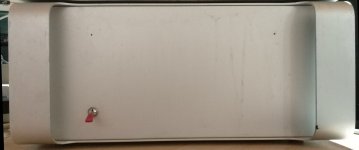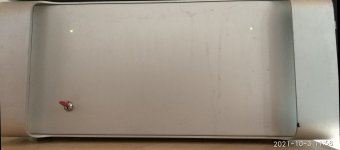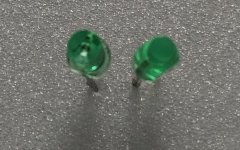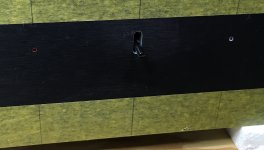I just drilled a 2 mm through the front plate (10mm) with my handy hand-drill with no issues at all, LED flush to the edge. (The backside was another story though [emoji15])
Wouldn’t hesitate to go 1 mm, but lower than that I guess some other tools would be necessary…
Wouldn’t hesitate to go 1 mm, but lower than that I guess some other tools would be necessary…
OK Understood.. The front one.. yeah that's a though one.
Here some ideas about using LED.
Pic shows Front of a Class A I build in 2013 first without and then with light..
The other two pics are the LED I USE . so all one has to do is to drill first 2mm and then the shaft of it which is 4 mm.. then the LED can be just nicely inserted,, also no need to glue and it will look nice from in as well from the outside..
LED I bought several different colors.. Usually I use blue or white.
Here some ideas about using LED.
Pic shows Front of a Class A I build in 2013 first without and then with light..
The other two pics are the LED I USE . so all one has to do is to drill first 2mm and then the shaft of it which is 4 mm.. then the LED can be just nicely inserted,, also no need to glue and it will look nice from in as well from the outside..
LED I bought several different colors.. Usually I use blue or white.
Attachments
The metal thickness limits the energy from the laser. that is, the thickness of different materials that can be cut.
You can cut 0.4 mm Aluminum with a laser intended for acrylic.
Friend has one, uses a CAD program to draw and instruct the machine to cut.
Uses Acrylic mostly, rarely foam PVC.
We have commercial shops, give drawing and material, they will do it. Their machines can do 12 - 18 mm steel.
You can cut 0.4 mm Aluminum with a laser intended for acrylic.
Friend has one, uses a CAD program to draw and instruct the machine to cut.
Uses Acrylic mostly, rarely foam PVC.
We have commercial shops, give drawing and material, they will do it. Their machines can do 12 - 18 mm steel.
Last edited:
You cant cut 0.4 mm Aluminum with a laser intended for acrylic.
I didn't say it would 🙄, I was gonna ask him what's the smallest hole he can fire through his usual acrylic sheet ....
My's Bro's laser on the other hand can cut through 20mm mild steel (15mm stainless) 😎
Sorry, corrected.
The smallest diameter hole will depend on the laser itself, and you can tell it to shift so much after every hole.
So you can get a grid, depends on the operator and the machine...
The smallest diameter hole will depend on the laser itself, and you can tell it to shift so much after every hole.
So you can get a grid, depends on the operator and the machine...
It´s not only a laser problem by itself, beam can be as narrow as you wish (think 600 DPI Laser printers or 1200/2400 DPI Linotronic ) BUT energy needed to practically evaporate metal and much worse metal thyermal conductivity.
You burn one point to, say, 700C , but areas surrounding your nicely focused spot of light won´t be much colder.
You burn one point to, say, 700C , but areas surrounding your nicely focused spot of light won´t be much colder.
My bro says piercing and cutting are two completely different kettles with a laser ....
His cutting can be of the order of 100 to 200 microns , piercing can leave a little volcano of material on the laser side of the material , which you'd need to process ... maybe the final anodising will cover that up on the mac book.
His cutting can be of the order of 100 to 200 microns , piercing can leave a little volcano of material on the laser side of the material , which you'd need to process ... maybe the final anodising will cover that up on the mac book.
- Home
- Design & Build
- Construction Tips
- invisible holes in chassis? (like apple laptops)




